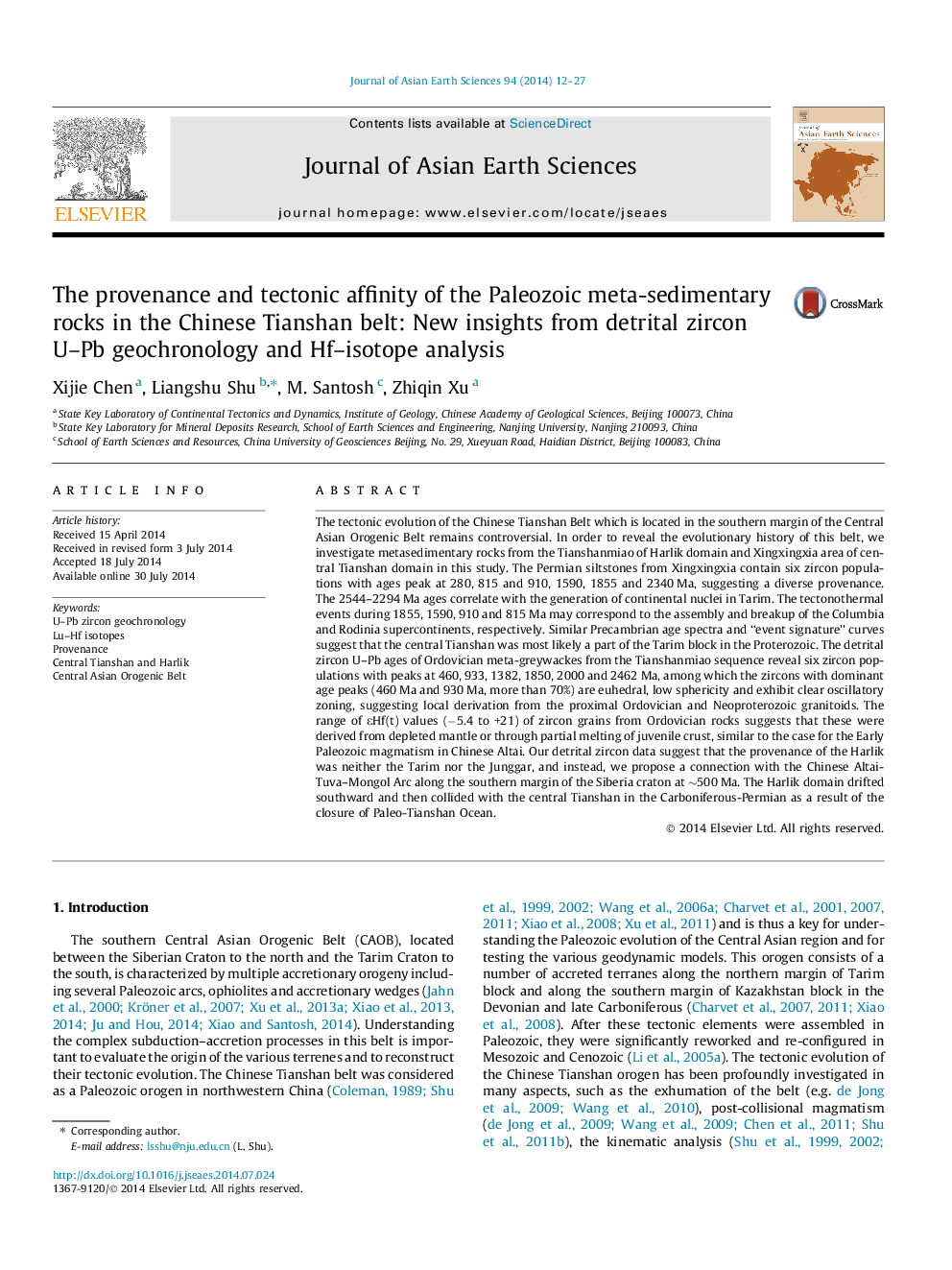| کد مقاله | کد نشریه | سال انتشار | مقاله انگلیسی | نسخه تمام متن |
|---|---|---|---|---|
| 4730577 | 1640374 | 2014 | 16 صفحه PDF | دانلود رایگان |

• Zircon age spectra show that Precambrian Central Tianshan was part of the Tarim Block.
• Detrital zircons in the Harlik derived from Tuva-Mongolia-Altai.
• Ordovician magmatic rocks in the Harlik derived from depleted mantle or juvenile crust.
The tectonic evolution of the Chinese Tianshan Belt which is located in the southern margin of the Central Asian Orogenic Belt remains controversial. In order to reveal the evolutionary history of this belt, we investigate metasedimentary rocks from the Tianshanmiao of Harlik domain and Xingxingxia area of central Tianshan domain in this study. The Permian siltstones from Xingxingxia contain six zircon populations with ages peak at 280, 815 and 910, 1590, 1855 and 2340 Ma, suggesting a diverse provenance. The 2544–2294 Ma ages correlate with the generation of continental nuclei in Tarim. The tectonothermal events during 1855, 1590, 910 and 815 Ma may correspond to the assembly and breakup of the Columbia and Rodinia supercontinents, respectively. Similar Precambrian age spectra and “event signature” curves suggest that the central Tianshan was most likely a part of the Tarim block in the Proterozoic. The detrital zircon U–Pb ages of Ordovician meta-greywackes from the Tianshanmiao sequence reveal six zircon populations with peaks at 460, 933, 1382, 1850, 2000 and 2462 Ma, among which the zircons with dominant age peaks (460 Ma and 930 Ma, more than 70%) are euhedral, low sphericity and exhibit clear oscillatory zoning, suggesting local derivation from the proximal Ordovician and Neoproterozoic granitoids. The range of εHf(t) values (−5.4 to +21) of zircon grains from Ordovician rocks suggests that these were derived from depleted mantle or through partial melting of juvenile crust, similar to the case for the Early Paleozoic magmatism in Chinese Altai. Our detrital zircon data suggest that the provenance of the Harlik was neither the Tarim nor the Junggar, and instead, we propose a connection with the Chinese Altai-Tuva–Mongol Arc along the southern margin of the Siberia craton at ∼500 Ma. The Harlik domain drifted southward and then collided with the central Tianshan in the Carboniferous-Permian as a result of the closure of Paleo-Tianshan Ocean.
Journal: Journal of Asian Earth Sciences - Volume 94, November 2014, Pages 12–27